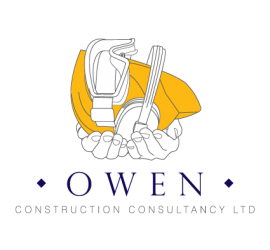Here is an insight into two aspects of Health & Safety in a construction environment; transport and mental health. These are two very high-risk aspects of health and safety, that may not be looked at to the same degree as other aspects, that may seem more important.
Workplace Transport
Transport through a site is an essential part of the day to day running & productivity of a construction site. This can be both for transporting people and transporting resources as well. For example, HGVs, vans and forklifts. This can come with some risks:
- Entrapment
- Collison’s
- Falls from height
- Fires
- Musculoskeletal disorders
All of these risks need to be assessed and made sure that the prevention against them is strong. Some ways that accidents involving vehicles can be prevented are:
- One-way systems
- Crossing and signalling systems
- Speed limits
- Narrowed routes
- External lighting
- Gritting plans
- Pedestrian walkways
- Reverse parking in bays
- Speed restrictors on vehicles
- Key control
In April 2018, a lorry driver was delivering some doors to a site in Gloucestershire. Once arriving at the site, the driver proceeded to take the straps of the doors that were secured in the back of his lorry. The straps securing the doors were tangled, so the driver climbed the load to release the straps that were tangled. Once doing this, he stepped back off the lorry and fell just over 2 metres onto the concrete ground beneath him. He was taken to hospital and sadly succumbed to his injurys and passed away. The HSE investigated this and when looking into the company that the driver worked for, they found evidence that the company hadn’t given a substantial risk assessment to certain risks linking to workplace transport, including working from height. This lead to the company being charged with breaching section 2(1) of the Health and Safety at Work Act, and being fined £480,000 and ordered to pay £12,053 in court fees.
How could this have been prevented?
Prevention of this happening would’ve been to carry out clear risk assessments regarding to working from heights, including working on a trailer and on loads. This would’ve identified the potential risk and ways to avoid this happening, which weren’t highlighted in terms of this incident. Instructions need to be given on every possible outcome of every risk relating to construction, even ones that aren’t likely.
Mental Health
Mental health is one thing that doesn’t get as much attention as the obvious sectors of health and safety that people would first think of such as electrical safety, manual handling etc. Mental health is still a highly important part of health and safety in a construction environment. A suicide prevention charity have come out and said that mental health should be held in the same regard as fire safety.
If we’re looking at statistics, they show that it is 62x more likely that someone will succumb to mental health as they are to die in a fire. This is putting pressure on legislators to make it compulsory that companies involve suicide prevention in their health and safety policies.
Research into mental health found that around a quarter (23%) of employees don’t actually benefit from the suicide prevention that is given by their employer, whereas a higher 38% feel like there could be improvements on the existing mental health policies in their workplace. A further 20% of employees feel that the mental health policies in place for them are nothing more than just ticking a box and are essentially meaningless.
Aside from suicide prevention, neglecting mental health policies in a workplace can lead to a lower productivity level.
Here are some risks of sub-standard mental health policies:
- Low team morale
- Low productivity
- Low concentration from workers
These are just a few aspects of the daily running of a construction site that are caused by mental health policies being neglected in the work place.
October 14, 2022
